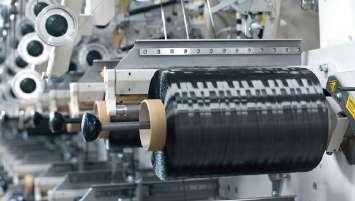40
TECHNICAL TEXTILE
PROTECTIVE TEXTILES: THE BEST CREATION OF TECHNICAL TEXTILE MD MAHEDI HASAN Content Writer and SEO Expert Protective textiles, also known as ProTech, are a kind of technical textile. These textile materials are used to make protective clothing. This kind of apparel is ideal for a person who faces various risks in his/her profession. This textile not only offers protection but also provides comfort for the wearer. In this article, I’ll discuss all the Protective textiles in detail.
1. Carbon Fiber: This kind of fabric is used to manufacture aviation and spacecraft, industrial fabrics, and marine textiles.
What is Protective Textile?
• What is protective textile
Protective textiles, or ProTech, are one of the most important sectors of technical textiles. This textile provides a variety of protection functions, including heat resistance, bullet-proofing, ballistic protection, chemical protection, and temperature protection, among others. This kind of fabric is mainly used for its functional properties rather than aesthetic properties. Protective textiles or fabrics are widely used in protective clothing, which is very important for a person who faces risk in his profession. This application has been used to safeguard against a variety of natural and man-made hazards. While protection is the main property of this fabric, it does not also ignore comfort. A number of protective clothing is manufactured from this technical textile. Protective textiles: raw materials Various raw materials are used in protective textiles. Depending on the type of clothing, different types of fabric are used. Here is a list of raw materials below:
2. Meta-Aramid Fiber: Industrial protective clothing, Hot gas filter bag, racing suit, all are manufactured from this fiber. Key Points • Protective textiles are derived from natural sources • Properties of protective textile • Various types of protective textile 3. Polypropylene Fiber: Marine ropes and wires, boat sail protection equipment, boat or ship construction are all made with this fiber. 4. Polybenzimidazole fiber: Used to make high-temperature protective clothing, gas filtration, etc. 5. Tencel Fiber: Tencel fibre is used in infiltration, a variety of medical textiles, and industrial fabrics in the oil industry. Properties of Protective Textiles Protective Textiles fabric comes with several exclusive features. And this textile is used based on its dedicated features and functionalities. Here are the features and functionalities of Protective fabric below: • Protech is a lightweight and excellently durable textile fabric. • This fabric comes with excellent Drapes as well as Handle features. • This fabric has a resistant capability to water and wind, and it also has a cold temperature. • It is also resistant to microorganisms,
SEPTEMBER 2021
bacteria, and chemicals. • Bulletproof and ultraviolet resistant protective textiles are available. Types of protective textiles Textiles that provide protection have a wide range of uses. Protective fabrics are utilised in practically every work setting for a variety of reasons, including worker protection. Below, we’ll look at the most important application areas for protective textiles: Flame Retardant Textiles Flame retardant clothing is made of cotton or nylon and other fibres like Aramid. This kind of textile has chemical finishes to reduce the flaming rate. Flame Retardant apparel is mandatory for workers who work in a high-temperature environment. Chemical Resistance Textiles Chemical Resistance Textiles are protective clothing that is primarily used to avoid exposure to a variety of risks. Activated Carbon was once utilized in this clothing, but it is now replaced by three layers of clothes. Workers wear this style of clothing in the chemical industry to secure them from dangerous chemicals. Health-care Textiles Medical personnel usually have to work in contact with blood and other infectious fluids. Protective medical textile clothing is made to protect them from these liquids. These garments include respiratory membranes, masks, footwear, emergency room textiles, etc. Firefighter suits High temperatures are a well-known foe of fire-fighters since they lead to mishaps. This is why fire-fighters need a suit that protects them from thermal radiation. Coats, pants, underpants, helmets, boots, gloves, station wear





















